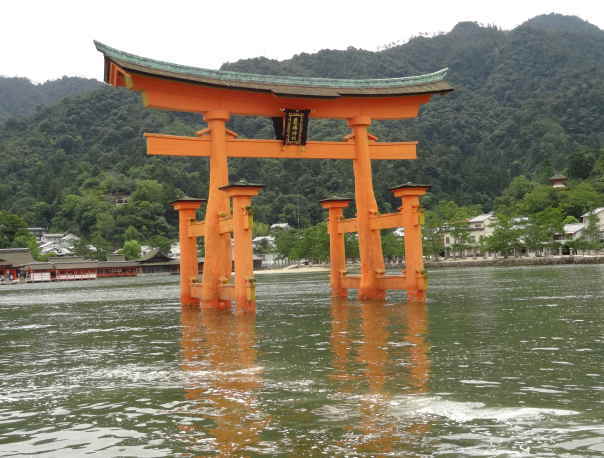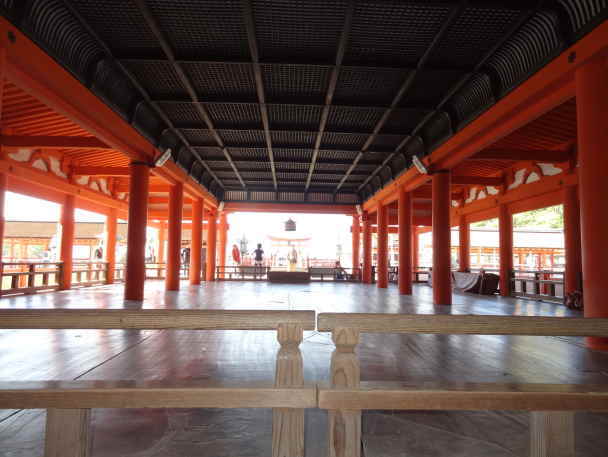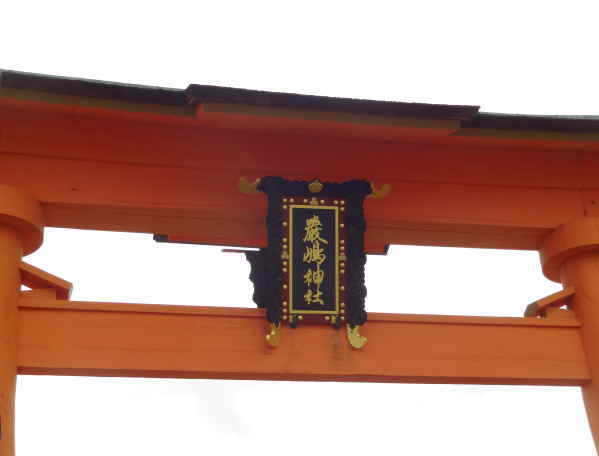The Otorii
| Designated as a National Cultural Asset in 1952. Distance from Itsukushima Shrine is 212.7m, and from the Hitasaki is 173m. |
 |
 |
from on a pleasure boat you can see the Otorii through
the purification hall
What is the Otorii
| The
Otorii is the boundary between the spirit world and the human world. A legend about “torii, “tori” means bird, especially a rooster, “i” means existence or staying, therefore “torii”originally meant a perch. Immediately
the world became darkness, and a lot of unhappiness like illnesses and fights
happened. |
History of the Otorii
1168 The first Otorii was constructed by “Taira-no-Kiyomori”. 1268
The second Otorii was constructed. 1325
The second Otorii was knocked down by a typhoon. 1371
The third Otorii was constructed. 1547
The fourth Otorii was constructed with four support pillars instead of two. 1561
The fifth Otorii was constructed by Mori Motonari. 1739
The sixth Otorii was constructed by Asano Yoshinaga. (the fifth feudal lord of the
Asano clan) 1801
The seventh Otorii was constructed by Asano Narikata. (the tenth feudal lord of
the Asano clan) 1875
The eighth Otorii was constructed. (the current Otorii) 1950
a part of the bottom was repaired. |
Dimensions
| Height
:
16.6m Length of the roof
: 24.2m Weight
: 60tons Circumference of the main pillar : 9.9m |
Architecture
style
| Two main pillars supported by two small pillars each. |
Material
|
Main pillar’s material : |
Why is the Otorii
able to endure the severe weather?
|
The
base of the Otorii is not buried, but rather just place on the seabed. It
stands on it’s own, supported by it’s 60 tons of weight. |
 |
